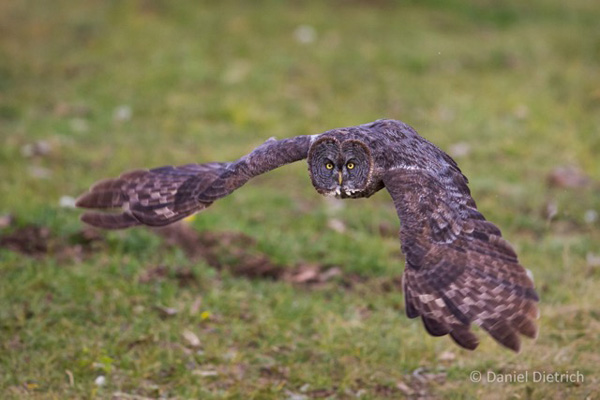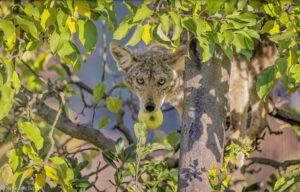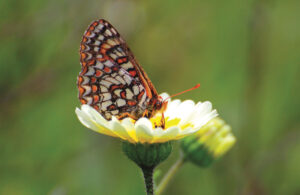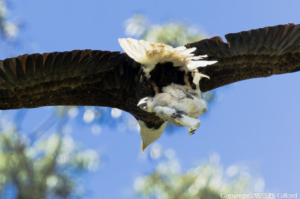
Acclaimed wildlife photographer Daniel Dietrich has travelled the world looking for the perfect shot of animals in their native habitats, but now he’s settled down in Point Reyes and finally feels “at home”. When he’s not aiming his lens at birds and bobcats, he’s raising awareness about those who cut corners to do so by baiting animals and disturbing their natural patterns. The proprietor of Point Reyes Safaris is now leading the charge to inject an ethical code of conduct into the profession.
BN: Are you originally from the Bay Area?
Dietrich: No, I’m originally from Buffalo, N.Y. I moved to the Bay Area in the early 90’s, and most of my adult life has been spent out here. I first came here in 1994 to work in high tech. So initially, I was living down on the Peninsula, then I made my way north through San Francisco and arrived in Inverness, where I’ve been for the past year.
BN: What prompted your move to Inverness?
Dietrich: The wildlife is the main reason I moved there. One of the first trips I took after moving to the Bay Area was to Point Reyes. I was blown away by the beauty and the wildlife. I’ve always had a bit of gypsy in me, and this is the first time in a long time that I feel like I’ve found home. This is one of the most spectacular places I’ve ever been, and I’d be delighted if I could stay here forever.
BN: And what are you doing, living at Point Reyes?
Dietrich: I’m a wildlife photographer. But I also pursue an online business selling my images. And I have a company here in Point Reyes leading safaris through the park.

BN: “Safari” is a word that people generally associate with Africa. What does that term mean applied to Point Reyes?
Dietrich: It really doesn’t mean anything different here. We load up the truck with binoculars, cameras, and food for the day and go out searching for wildlife. In Africa you look for lions and wild dogs. Here we look for bobcats and coyote.
BN: How did you first get interested in wildlife?
Dietrich: There’s not one specific moment I can pin down. I’ve always loved animals. As a kid, I used to go camping or on road trips a lot with my family, and we were always interested in them. We would play games like trying to be the first one to spot an animal on the trip. My brother studied wildlife biology in college, so perhaps it runs in the family.
BN: How did wildlife merge with photography?
Dietrich: Wildlife photography has always been a strong hobby for me. In 1996, I went on my first photo trip, a safari in Africa. I stepped out of high tech about three years ago, and I’ve been pursuing wildlife photography ever since.
BN: How did you learn photography?
Dietrich: I’m self-taught. I don’t have any formal degree in photography; I just picked up a camera, explored what it could do, and started reading. I bought my first camera when I traveled to Australia in the 90’s. Now I shoot every day, and I’ve developed my own technique. If there’s some specific thing I want to learn about, there are now so many videos online, it’s easy to learn.
BN: You’re also interested in the ethical treatment of animals by wildlife photographers. What is the scope of the problem, and how did you get interested in it?
Dietrich: The interest came from my love of animals, and my knowledge that baiting of animals is dangerous to their well-being. The hottest topic in baiting animals right now is owls. People will bring store-bought mice, dangle them in the air, place their cameras in the field, then toss the mice into the field. This causes the owls to hunt outside their natural territories, and causes a hazard because it draws the owls closer to busy roads. The owls actually begin to recognize cars driven by these photographers, so it distorts their usual habitation patterns.

BN: What are you doing about the problem?
Dietrich: I’m spending time with a small community of photographers who are developing ethical rules for certain wildlife photography contests and publications. On the cover of one very popular magazine there was an image of a baited owl….
BN: How can you know for sure that the owl was baited?
Dietrich: If I see a perfect photograph of an owl swooping right down at the camera and picking up a mouse from the snow, I’m suspicious. Also, if there’s a picture of white mice, for example, in an area where there aren’t native white mice, then I’m also suspicious. Of course, I can always ask the photographer whether or not he baited the owl. Sometimes he’ll tell me, sometimes he won’t.
Mostly, we encourage magazines to consider carefully the publication of images like this.
BN: What is your greatest challenge in wildlife photography?
Dietrich: I would say probably the unpredictability of animals. There’s no timeline that they come out on. So the challenge is that it takes a lot of patience, a lot of time, a lot of sitting in the field and watching and waiting. That patience is critical.
I think that’s part of the ethics problem. Not everybody has that type of patience. In order to get a picture of an owl flying at them, some photographers will go out and throw a mouse in a field. People are so anxious to get that shot, they’ll compromise their ethics, to get the shot in the least amount of time with the least amount of effort.
BN: Which critters are you focusing on now?
Dietrich: Right now I’m having the most success with bobcats. Point Reyes has a healthy population of them. I’ve spent several years watching them, and observing their habits and their hunting techniques. I’ve been having great success in finding and photographing them in the park. The majority of people who come out on the safaris want to see bobcats.
BN: What is your favorite outdoor destination in the Bay Area?
Dietrich: Point Reyes National Seashore.
BN: I anticipated that you’d say that. In fact, about 75 percent of the people I ask this question of say that. So I’ve learned to follow up and ask: Is there a specific trail, or location within the park that you like?
Dietrich: For me it’s not one particular place in the park. With my safari company, I cover all corners in the park. What grabs me is the diversity of the wildlife throughout.
Learn More:
>> Read Daniel’s piece on the use of bait to photograph owls.
>> Visit Daniel Dietrich’s Point Reyes Safaris
>> View more of Daniel’s wildlife images at DanielDietrichPhotography.com




